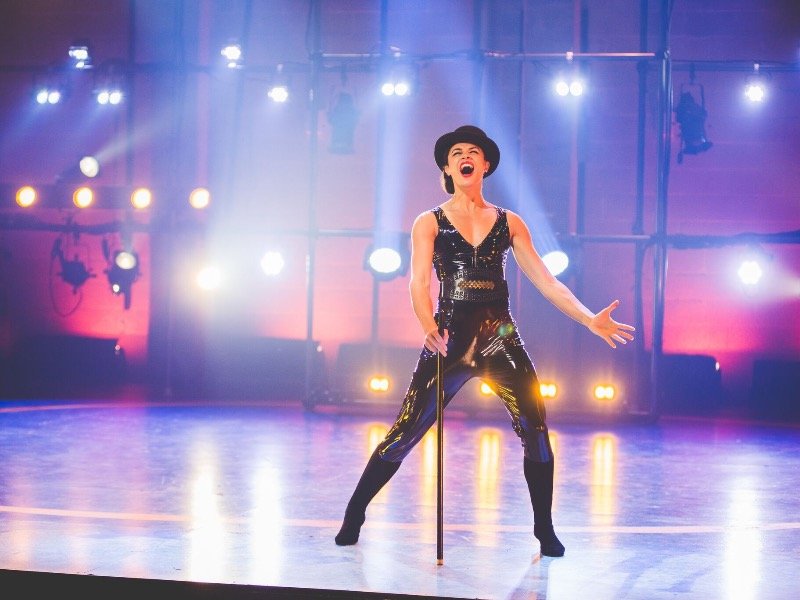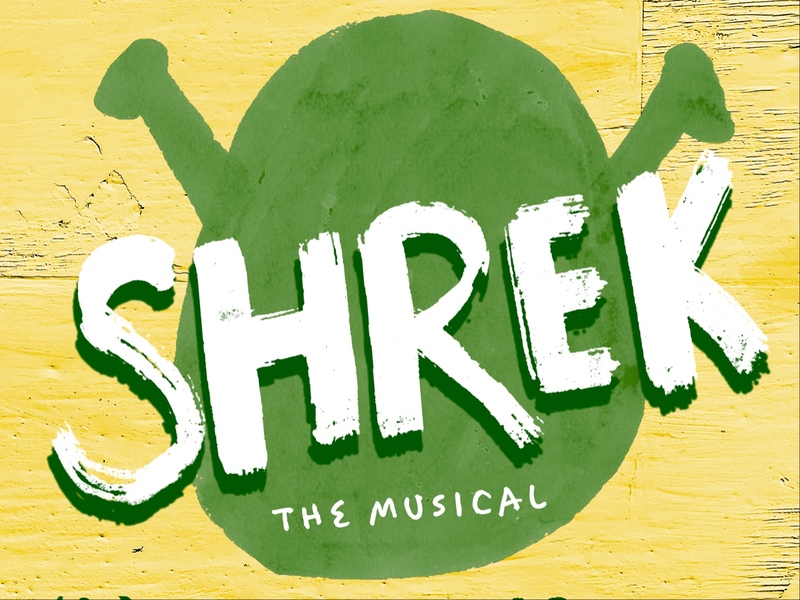Poor Pippin. The second son of Charlemagne, all he wants is an extraordinary life that is completely fulfilling. And yet, no matter where he looks, his options fall short of perfect, self-actualization. And it’s not like he isn’t trying. Pippin looks for happiness in education, war, sex, politics, art, religion and even rural domesticity. But it’s never enough. Or is it?
In Skylight Music Theatre’s current production of "Pippin," a charismatic cast of players leads the titular prince through all these existential explorations, in a mix of styles that pays homage to the musical’s ’70s roots and gives audiences plenty of modern glitz. It’s a visually stunning production supported by some terrific voices, ambitious choreography and star turns Lucas Pastrana as Pippin and Krystal Drake as the Leading Player.
As the wandering, wondering title character, Pastrana embodies youthful yearning, gullibility and heartbreak in equal measure. He moves with determination towards each succeeding scene, a beautiful blank slate – echoed in his white crocheted sweater – to be shaped by his experiences. Fearlessly climbing scaffolding to dizzying heights, scampering on top of rotating costume trunks, leading a charge in a highly stylized battle or wooing a bevy of willing maidens, Pastrana fills the role with energy and a muscular physicality. And with and without amplification, his clear tenor fills the Cabot Theatre easily, sailing atop the high notes in two of the best songs in the show, "Corner of the Sky" and "With You."
But before the audience meets Pippin, they are introduced to the Leading Player. A beguiling guide for the evening, Drake is attired as a ringmaster with a red bedazzled coat, black bowler hat, cane and a skin-tight suit of shiny black latex. Her breathy voice invites everyone to join in the festivities in the opening number, "Magic to Do," but Drake’s singing is often upstaged by her own sly smile and mesmerizing dance moves, smooth as liquid mercury. Charismatic and commanding throughout the show, it is hard to take your eyes off her, whether she’s introducing scenes, urging Pippin to try a new path to enlightenment or chastising cast members for going off script. And when she finally lets loose vocally, it’s like she’s been hiding a superpower.
Also notable are the two strong women in Pippin’s life who both protest that they are "ordinary mothers and housewives" while proving to be so much more. Perhaps a wink to the early women’s lib movement emerging at the time the show was written, the conniving queen Fastrada (Kathryn Hausman) and the lonely, estate-running widow Catherine (Natalie Ford) bring assured sopranos to their equally confident characters who display loyalty to their loves in very different ways.
"Pippin" enjoyed a notable revival on Broadway in 2013, embracing a circus theme with lots of acrobatics and clowning. Director Ray Jivoff adds a grace note of this aesthetic to this production with Ayana Strutz, an aerialist and contortionist who twists, bends and juggles through most of the play, adding amazement to the already kinetic show. Choreographer Christal Wagner packs the production with complicated dance numbers, sending the cast spinning, leaping and even tap dancing through each song. She channels Bob Fosse while making the movement feel contemporary and fitting the routines to the strengths of the cast.
The design of "Pippin" is also bold on every level, amping up the spectacle steadily until the finale, providing a stark contrast to the musical’s end. The first act’s clever but spare set (design by Keith Pitts) is composed of scaffolding, a metal staircase, lots of light trees and elegant steamer trunks that open to reveal magic tricks. In addition to a throne, Charlemagne’s court is filled with flash and glamour, courtesy of cartoonishly oversized golden props and the metallic and jewel-encrusted costumes designed by Kärin Simonson Kopischke. A cross between a sexy Vegas revue and the "Heavenly Bodies" exhibit at the Met, she pairs corsets with Christian iconography, shimmering iridescent gowns with battle armor made of football pads – mixing the ridiculous with the divine.
Translucent panels are also strategically deployed for some creative shadow play and ’70s psychedelic dance collages. They even display the lyrics for a sing-along, which the audience happily joins in. The second act, away from the royal court, has a softer quality, filled with Monty Python-esque peasants clad in soft prairie prints. One of the trunks transforms into a bed, which Pippin first uses as a hiding place. Later it’s where he finds love and a new family.
As the tone of the show gets darker, the structure of the performance breaks down and the effects that initially dazzled us seem gaudy and crass. Jason Fassl’s lighting design first astonishes and then temporarily blinds the audience, just as the Leading Player’s showmanship does, until Pippin stops the spectacle. Melodrama is abandoned for realism and razzle dazzle is replaced with a ghost light. A million miles away from the feel-good musicals that Skylight normally trades in, "Pippin" is a dramatic kick to the head, with a sucker punch for parents thrown in at the very end. It’s also irreverent, self-consciously meta and funny, and it features some of Stephen Schwartz’s most beautiful songs.
In short, it’s a great way to start Skylight’s season.







